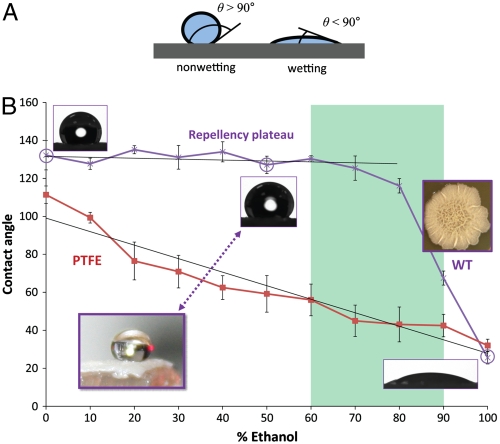Fig. 1.
Bacterial biofilm wetting characterization by contact angle analysis. (A) Schematic of the contact angle θ: low (high) surface tension liquids generally wet (do not wet) surfaces and have small (large) contact angles. (B) Contact angle of water droplets on a WT B. subtilis biofilm and a Teflon block as a function of ethanol concentration. A plateau of ∼135–145° is seen for the biofilm up to ∼80% ethanol, when it transitions to wetting. In contrast, Teflon displays a roughly linear decrease in contact angle. Liquid drop profiles used for determining the contact angle are inset for wild-type biofilm at 0, 50, and 100% ethanol. Antimicrobial activity of alcohols is believed to be optimal in the 60 to 90% range, denoted as the green region, where the biofilm is largely nonwetting, suggesting that ethanol-based bactericides may not wick into the biofilm. Error bars are SD, n = 7. (Insets) The architecture of the wild-type biofilm (Right) and a nonwetting droplet of 50% ethanol on the biofilm surface (Left).

